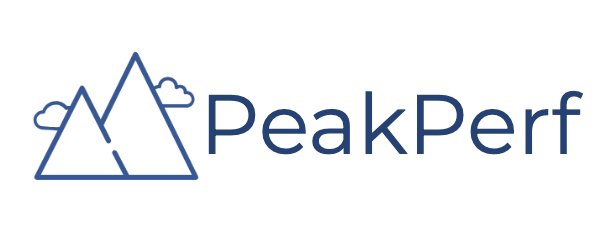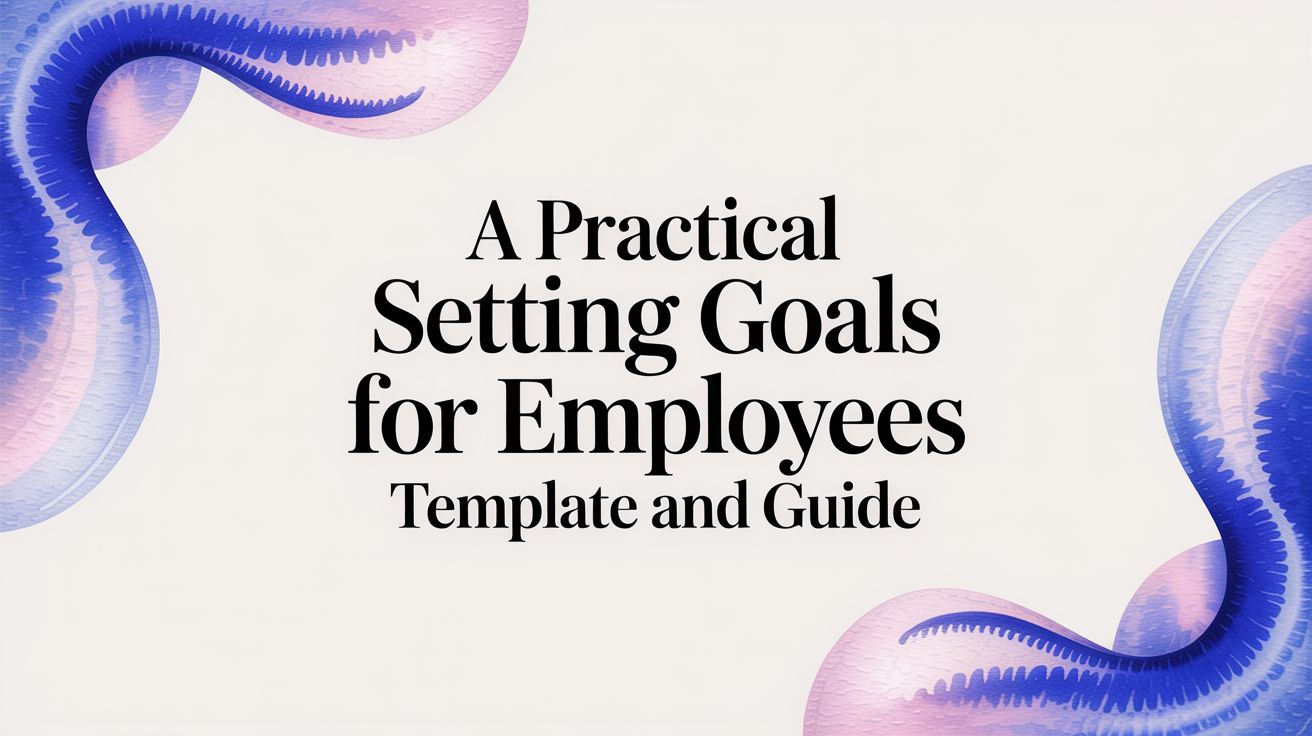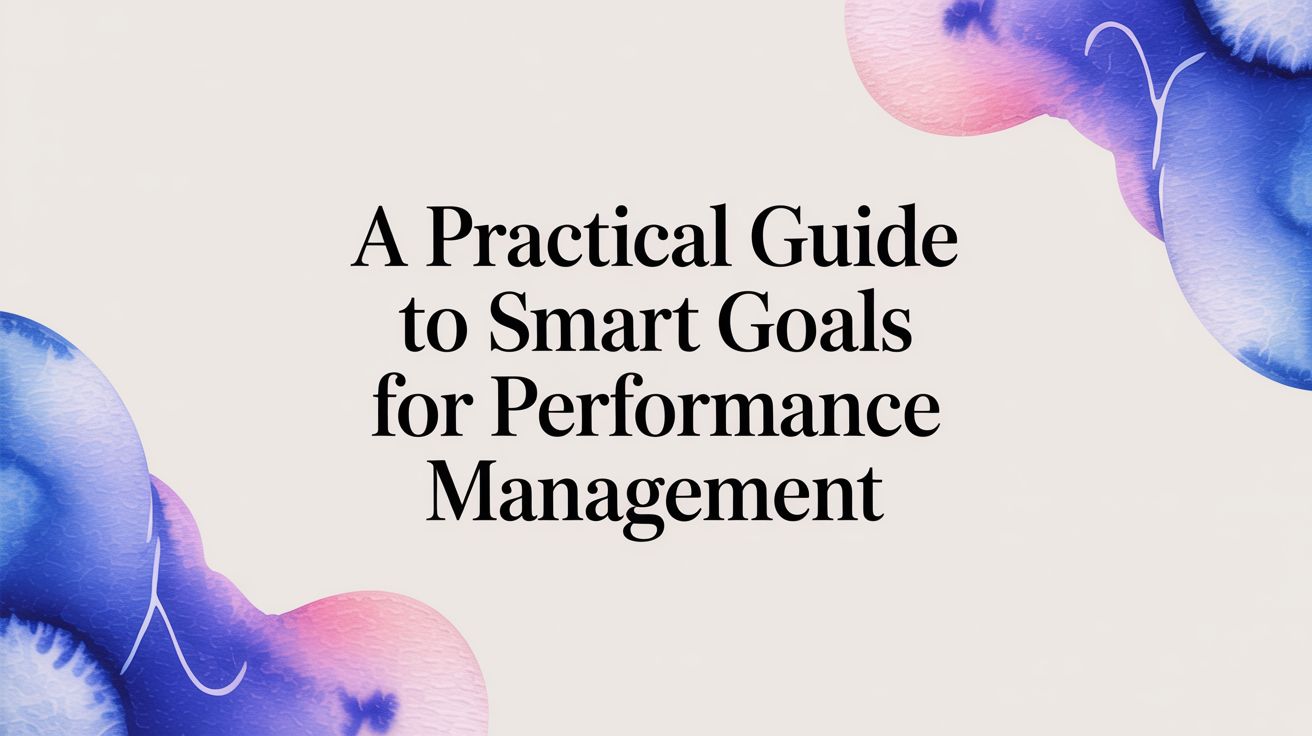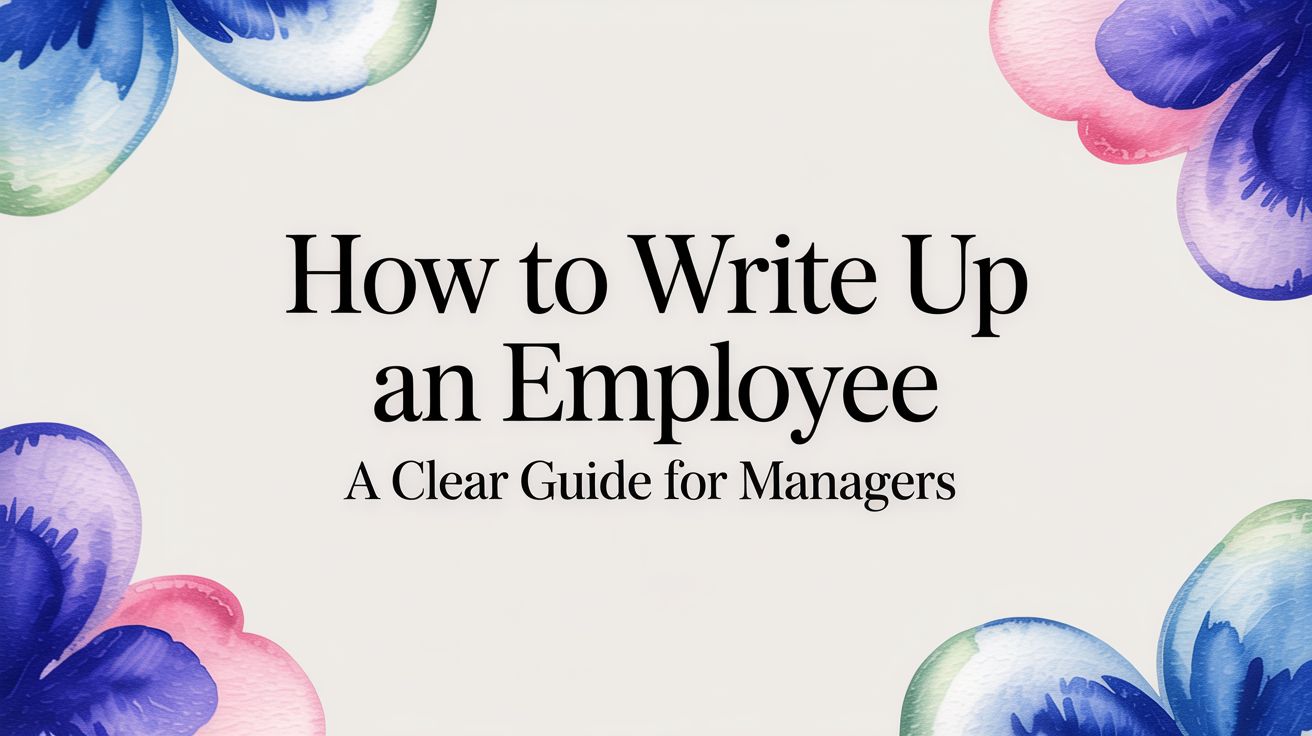The Ultimate Playbook for Giving Feedback That Motivates and Corrects

Why We Avoid Feedback (and Why It Hurts Performance)
Your one-on-one is coming up in just thirty minutes. You'll be discussing a missed deadline, and it's natural to feel concerned about causing conflict or demotivating your employee. Avoiding this conversation may seem easier, but it can create a communication gap that allows small issues to become bigger problems over time. Remember, good employees appreciate open communication and often look for new opportunities if they feel unheard. Companies that prioritize regular feedback tend to have a 14.9% lower turnover rate, underscoring the importance of honest, supportive conversations in keeping talented team members happy and engaged.
This is your personal playbook, offering a clear and easy-to-follow system for giving feedback. You'll discover a straightforward framework, receive helpful scripts for everyday situations, and build the confidence to handle even more complicated reactions.
Shift Your Mindset: From Critic to Coach
Your mindset is the first step. Do not see feedback as a confrontation. Instead, view it as an investment in your people. You invest in an employee's growth when you give clear guidance. You provide them with data to improve their skills. You help them align their work with team goals. This is about clarity, not criticism. A lack of feedback is neglect. Thoughtful feedback shows you care. This perspective shifts your role. You become a coach, not a judge. Your goal is to develop an employee's potential, not point out flaws. This approach builds trust. Your team will accept your feedback when they know you support their success. They will engage in a dialogue about performance instead of becoming defensive. This mindset fosters a culture of continuous growth.
Your Core Play: The Simple SBI Feedback Framework
You need a simple tool to act. The SBI framework is that tool. SBI stands for Situation, Behavior, Impact. The Center for Creative Leadership developed it. It offers a framework for giving feedback. It eliminates judgment. It keeps the conversation focused on facts. The SBI model helps you distinguish observation from interpretation. This separation is essential for effective correction.
The SBI model works because it separates facts from feelings. This keeps feedback non-threatening, which lowers defensiveness and increases learning retention.

Step 1: Situation. When and Where Did It Happen?
Ground your feedback in a specific time and place. Vague feedback like "You need to be more prepared" is unhelpful. It lacks context. The employee is left guessing what you mean. Starting with the Situation anchors the conversation to a real event. The feedback becomes objective. You discuss a specific moment, not a general personality trait.
Examples:
- "During this morning's team meeting, when you presented the Q3 project update..."
- "In the client call with Acme Corp yesterday afternoon..."
- "When I reviewed the marketing report you submitted on Friday..."
This specificity focuses the conversation on a shared reality.
Step 2: Behavior. What Was the Observable Action?
This is the most important step. Describe the employee's specific, observable actions. Report what you saw or heard. Act like a camera reporting facts. Avoid judgmental words. Avoid assumptions about intent. Interpretations like "You were disrespectful" or "You seemed disengaged" are not behaviors. Describe the actions that led you to those conclusions.
Examples:
- Instead of "You were unprepared." Use "You clicked through the slides without speaking to the data points. You were unable to answer two questions about the timeline."
- Instead of "You dominated the conversation." Use "You spoke for 15 minutes of the 20-minute discussion. You spoke over Sarah twice when she tried to comment."
Focusing on tangible behaviors gives the employee a clear path to change. People change their actions, not their personalities.
Step 3: Impact. What Was the Result?
Connect the behavior to its consequence. The Impact explains why the behavior matters. This step motivates the employee because they understand the "why" behind your feedback. The Impact affects business outcomes, such as project delays. It also influences people, like team morale. Frame the Impact objectively.
Examples:
- "...the Impact was that the team left the meeting unclear on next steps. We are now behind on our deadline." "...the Impact on the client was that they felt their concerns were not heard. They sent an email expressing confusion.
- "...the Impact on the team was that other members did not get a chance to share ideas. We may have missed valuable insights."
You elevate the feedback from a personal opinion to a business observation. This makes it compelling and actionable.
Ready to put the SBI framework into practice? Try our free SBI Feedback Tool to draft your feedback in minutes. Get structured guidance and AI-powered suggestions to help you deliver clear, actionable feedback.
Real-World Scripts: Putting the SBI Playbook into Action
Theory is different from practice. Here are three scripts you can adapt for everyday situations.
Play #1: For Correcting Underperformance (A Missed Deadline)
Goal: Address the missed deadline, understand the cause, and create a plan that does not demoralize the employee.
Script:
"Hi [Name], do you have a minute to talk about the X project
(Situation)
I wanted to talk about the project deadline that was due yesterday.
(Behavior)
I noticed the report was not submitted, and I did not receive an update that it would be late.
(Impact)
The Impact is that the leadership team expected to review those numbers this morning, and now their decision is delayed. It also affects the next phase of the project. Can you walk me through what happened?"
(Listen to their explanation. Then, transition to problem-solving.)
"Thank you for the context. What support do you need to finish this? What should we do to meet future deadlines?"
Play #2: For Addressing Behavioral Issues (Dominating a Meeting)
Goal: Correct a behavior that affects the team while reinforcing the employee's value.
Script:
"Hi [Name], thank you for your contributions in the brainstorming meeting. May we discuss this for a moment?
(Situation)
During the team meeting for the new campaign...
(Behavior)
I observed that you shared several ideas, but you also spoke over a few team members when they tried to talk.
(Impact)
The Impact was that some quieter members did not have the opportunity to contribute their thoughts. I am concerned we are missing valuable ideas. Your passion for this is evident. How do we make sure we get your energy while also creating space for others?"
Play #3: For Reinforcing Positive Performance (Showing Initiative)
Goal: Recognize a specific positive behavior to encourage its repetition.
Script:
"Hi [Name], I wanted to recognize your work on the recent client issue.
(Situation)
When the Acme Corp server went down yesterday...
(Behavior)
I saw you created a communication channel for stakeholders, pulled the technical logs, and had a diagnosis ready before the client escalated the ticket.
(Impact)
The Impact was huge. It calmed the client, saved our engineers hours, and reinforced the client's trust in us. That level of initiative is what we need on the team. Great job."
Handling the Toughest Part: How to Respond to Difficult Reactions
You do not control an employee's reaction. Your response to their reaction defines your leadership. Here is how to handle two common complex reactions.
Scenario 1: When Your Employee Gets Defensive
Defensiveness is a natural response. Do not get drawn into an argument.
- Pause and Listen. Do not interrupt. Let them finish speaking. This shows respect.
- Acknowledge Their Perspective. Use phrases like, "I hear what you are saying." This is not an agreement. It validates their right to have a reaction.
- Re-center on the Impact. Bring the conversation back to the objective consequences. Say, "I understand your perspective. The Impact on the team was X. That is the problem we need to solve."
- Shift to the Future. Focus the conversation on future solutions, rather than dwelling on past blame. Ask, "What do we do differently next time to ensure a better outcome?"
Scenario 2: When Your Employee Gets Quiet or Emotional
Silence or tears signal that the employee feels overwhelmed.
- Show Empathy and Offer Space. Acknowledge the difficulty. Say, "I know this is tough to hear."
- Offer a Brief Pause. Suggest, "Would you like to take five minutes? We can grab some water and resume." This gives them time to compose themselves.
- Clarify Your Intent. Reiterate that the goal is their success. Say, "My goal is to help you succeed. This feedback is about a specific behavior, not about you as a person."
- Confirm Understanding. Ask them to paraphrase the feedback in their own words. This ensures the message was received correctly before you find solutions.
Your Key Takeaways: A 5-Point Feedback Checklist
Use this checklist to prepare for your following feedback conversation.
- Check Your Mindset: Do I see myself as a coach, not a critic?
- Prepare Your SBI: Have I identified the Situation, Behavior, and Impact? Have I removed judgment?
- State Your Positive Intent: Will I start by stating my goal is to support their success?
- Plan for Dialogue: Am I prepared to ask questions and listen to their perspective?
- Focus on the Future: Is my goal a clear, forward-looking plan with agreed-upon next steps?

Turning Feedback into a Habit
Consistency gives these skills their power. Feedback is not a formal, rare event. It is a regular part of your team's rhythm - frequency matters. Employees are 3.6 times more likely to be motivated when their manager provides daily feedback. This does not mean a formal SBI conversation every day. It means creating a transparent culture where quick check-ins are the norm. Normalize these conversations. You will reduce anxiety for you and your team. You will create a high-performing team committed to learning. This is how you drive success.
Providing feedback is not just about highlighting mistakes, but about unlocking potential. Transitioning from a critic to a coach makes conversations less stressful and more transformative. Regular practice will strengthen both your team and your leadership skills.
Start Practicing Today
You've learned the SBI framework. Now it's time to practice. Use our free SBI Feedback Tool to:
- Draft your next feedback conversation in under 10 minutes
- Get AI-powered suggestions based on proven frameworks
- Save and refine your feedback before delivery




